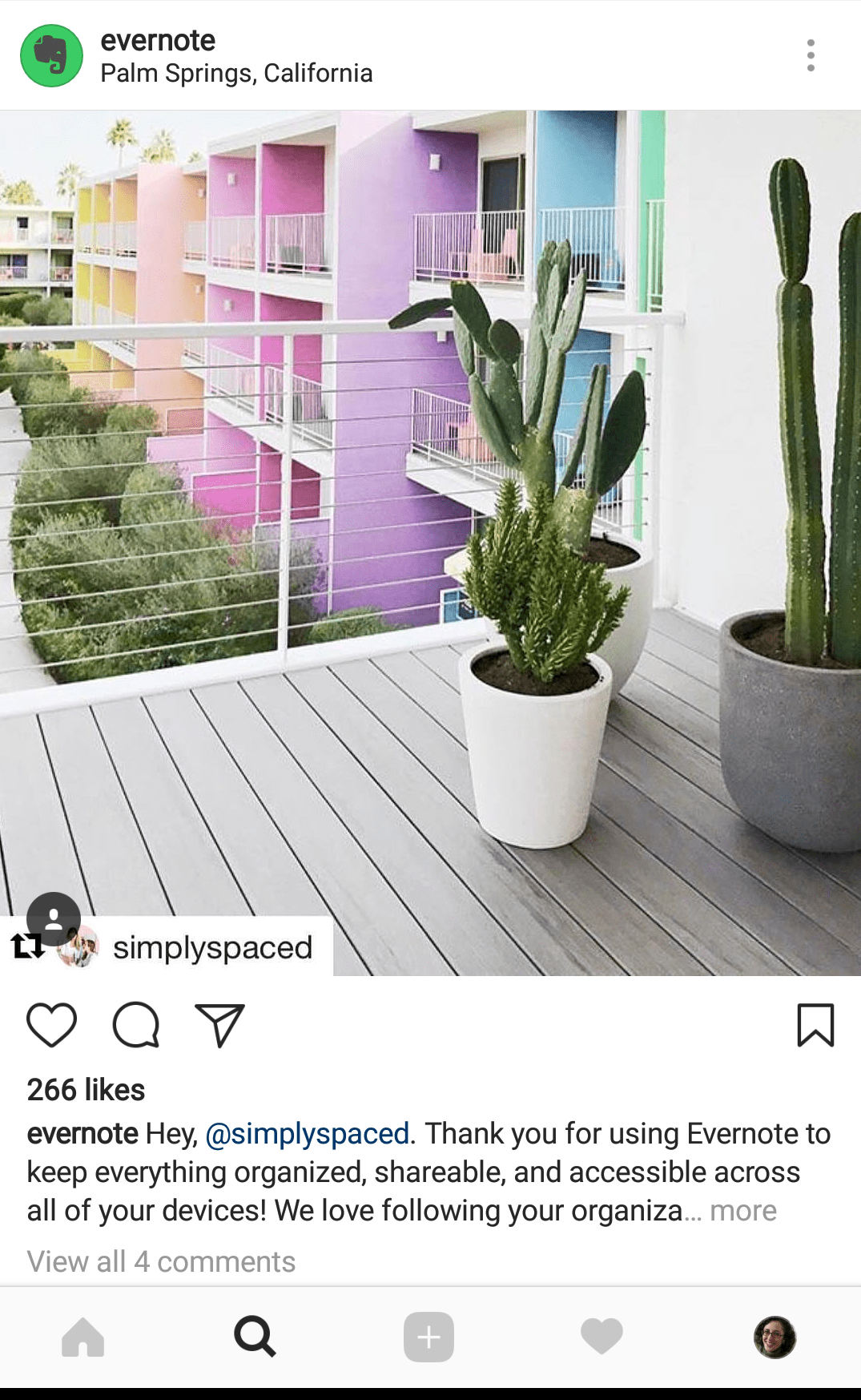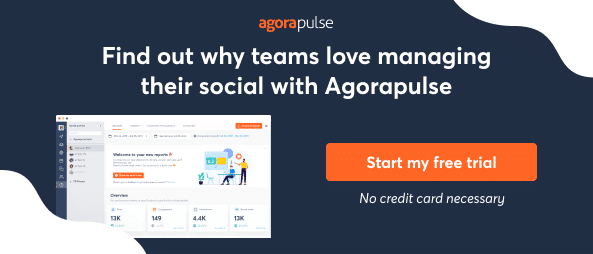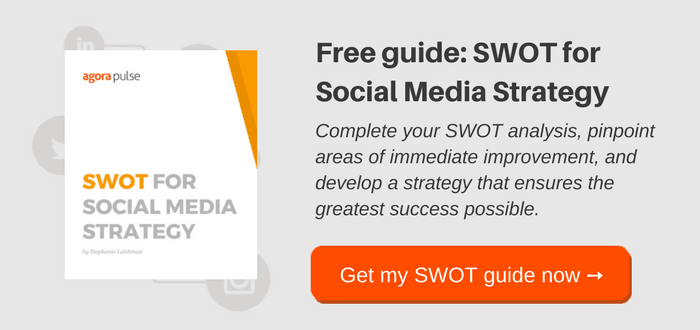If you’re familiar with SWOT analysis, don’t dismiss it as “old school.” It can be applied right away to your social media strategy. Let’s see how.
Businesses, non-profits, and even social groups aim to stay relevant and desirable to their customers, members, and target audiences. People only have so much money, time, and attention.
hbspt.forms.create({
region: “na1”,
portalId: “8477337”,
formId: “32f0dc74-0d5e-4438-9acc-0b0f1dbbc6e3”
});
How do these organizations keep from going under?
Why apply SWOT to social media strategy?
One framework that businesses have been using for years is SWOT, which stands for:
- Strengths
- Weaknesses
- Opportunities
- Threats
The SWOT framework is traditionally used to analyze the internal and external factors that help or hurt a company’s success.
Although the SWOT model has been used for years with business strategy, it can be applied in other ways, even to your social media strategy.
It is tempting not to have a strategy and just keep social accounts updated. While it seems faster and more efficient not to have a strategy, you will actually save a lot more time in the long run by having a strategy.
Going through a SWOT analysis helps to hone that strategy so you can focus on what will bring the greatest reward.
Using a framework like SWOT for social media can help you see your strategy from a different angle. It also organizes your thoughts around internal and external factors that influence your success in a way that keeps your strategy balanced.
Learn more: How to Build a Social Media Marketing Strategy in 5 Easy Steps
Internal Strengths and Weaknesses
Self-awareness is a great trait to have and any business, university, or non-profit needs self-awareness too. The “S” and “W” of SWOT—strengths and weaknesses—are the parts of the analysis that help build that self-awareness.
What are your social media strengths and weaknesses?
Is your strength that you have products that photograph really well?
Maybe your brick-and-mortar stores have great lighting so user-generated content (“UGC”) always looks fabulous. Knowing this, you might include a UGC campaign in your social media strategy this year to increase awareness of your products.
Below is an example of how Evernote posts user-generated content. It finds an Instagram image that one of its customers’ posts, and it reposts it with a thank you. While the post highlights how much someone else loves Evernote and how they use it, it also focuses the post on the company or person who posted the image and the great work they are doing.
Remember to also consider your weaknesses.
Perhaps one of your weaknesses is that you are not getting a lot of reach on Twitter because you are not using the right hashtags. It is important to note that and set some goals for increasing reach through better hashtag research.
External Opportunities and Threats
While a strategy focuses on the actions you want to take, there’s more to it: there are factors you can’t control. These external factors make up the “O” and “T”—opportunities and threats—of the SWOT analysis. There may be gaps in the market you can fill (opportunities) as well as competitive forces (threats).
You will want to identify what these are.
In regards to social, maybe you are one of many florists in your geographic area, but no one has started an Instagram account. There might be a big opportunity there.
Or perhaps there is already a florist in town who has won over many with their stunning Instagram images.
Knowing this is a threat can result in ideas that will actually make an impact. For example, you might realize it’s not just about the quality of the images; maybe you need to post content that is unique and different, so people will be willing to follow you too.
A free guide for your SWOT for social media analysis
Going through the entire SWOT analysis for your social media strategy can be difficult, especially when most SWOT guides out there are for analyzing a business, not for analyzing your social media.
If you want help using the SWOT framework for your social media strategy planning, not to worry! I have written this step-by-step guide with examples and cases. I also include prompts so you can ask yourself the right questions for completing the SWOT analysis in a way that will be most beneficial to you.
Using the SWOT framework for your social media strategy can keep you from posting to social media “for social media’s sake” and instead get the value and return on investment that you deserve.
Get started on saving time and energy on your own social media management! Check out our free trial of Agorapulse to help you schedule, track, and measure all your social media efforts.






